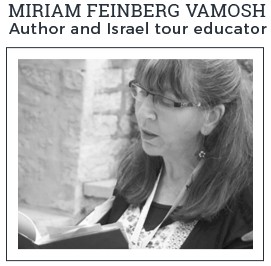What is the Talmud?
What is the Talmud?
When some people hear the word “Talmud” they immediately picture a bunch ofmen sitting around in ancient times thinking up laws that made life hard for everyone else. The first part – the who and the when – is true enough. When it comes to the third part – the why – let’s start over. Let’s discover what the Talmud really is.
After the destruction of the Second Temple and Jerusalem, the spiritual and physical magnet of the Jewish People, the sages began to seek ways of binding the people together by expounding on the laws of the Bible so that everyone would know exactly how to “follow the rules.”
For example, the fourth Commandment, to remember the Sabbath and keep it holy. The Bible contains some rules on how to do that best. In the days of Jesus, hard and fast rules were yet to be made and some were stricter than others as to how to observe the day of rest to best honor God and God’s creation (Mark 2:27).
That’s a ceremonial example. But the Talmud is just as full of ethical examples, along the lines of the way Jesus expounded on the true meaning of the verse “love your neighbor as yourself’ (Lev. 19:18).
There are also many stories in the Talmud, which illustrate the way the sages wanted people to live according to the biblical rules. One example of thousands is the story of Kamza and Bar Kamza. These stories belong to a type of literature called “midrash.”
Orthodox Jews look upon the regulations in the Talmud nearly with the same gravitas as they take the words of the Bible. That is because Orthodox Judaism has the belief that in a miraculous way, when Moses received the Ten Commandments at Sinai, he also received the entire Talmud. That is why Orthodox Jews believe it is so important to feel that they are trying to follow not only all the laws in the Bible, but also the wisdom of the sages in the Talmud.
The Talmud was not written down at first. That’s why Jesus so often said when teaching “you have heard it said…” – in those days people listened to Scriptural words of wisdom, and repeated them – at home, on the road as they walked, in the synagogue and the market place. The first part of the Talmud,called the Mishnah, was first written down in around 200 AD under the leadership of a sage named Judah Ha-Nasi. The second part of the Talmud is called the Gemara, which is commentary on the Mishnah.
Now, moving ahead a step, you’re ready to learn that there are two Talmuds. One was compiled in the Land of Israel in about 400 AD. It’s called the Jerusalem Talmud, although it was actually compiled in many places including Tiberias and Sepphoris. The second, called the Babylonian Talmud, was compiled by Jews living outside the Land of Israel and was was finally set down in writing around 500 AD.
Here’s a way to understand how the Talmud was meant at its best to illuminate the word of God. It was explained by Rabbi Yakov Z. Meir in his weekly column about the Torah portion (the particular verses read on a certain Sabbath) in Haaretz, Friday March 8 2013.
The verses under discussion are in Exodus 35:30–31. And Moses said unto the children of Israel: ‘See, the Lord hath called by name Bezalel the son of Uri, the son of Hur, of the tribe of Judah. And He hath filled him with the spirit of God, in wisdom, in understanding, and in knowledge, and in all manner of workmanship.”
The jumping-off point for the midrash (the story, as I mentioned above) is an explanation of the Hebrew name “Bezalel,” which literally means “in the shadow of God.” The sages concluded that Bezalel was given that name because of his great wisdom. How so? Here it is, straight from the Talmud (well, a translation of the Talmud, from a website called www.come-and-hear.com/talmud.
“ Samuel b. Nahmani said in the name of R. Johanan: Bezalel was so called on account of his wisdom. At the time when the Holy One, blessed be He, said to Moses; Go and tell Bezalel to make me a tabernacle, an ark and vessels, Moses went and reversed the order, saying, Make an ark and vessels and a tabernacle. Bezalel said to him: Moses, our Teacher, as a rule a man first builds a house and then brings vessels into it; but you say, Make me an ark and vessels and a tabernacle. Where shall I put the vessels that I am to make? Can it be that the Holy One, blessed be He, said to you, Make a tabernacle, an ark and vessels? Moses replied: Perhaps you were in the shadow of God and knew!”
In this imaginary discussion between Moses and Bezalel, Bezalel “questions the orders” he received from Moses. He is not questioning the orders from God – he has absolute faith in God’s word, but wondered whether Moses had got it right! Pretty bold, wasn’t he? But Bezalel was merely seeking God’s true message, as we all are. According to the sages, he was doing what we all do when we open our Bibles and allow its verses to fill our hearts and minds so we may apply them in our daily lives.


Trackbacks & Pingbacks
[…] that “the woman” of 2 Maccabees and in the version told by Rab Judah in the Babylonian Talmud (Gittin 57b) becomes Miriam in other rabbinic literature, and Maryam in Syriac Christian […]
[…] the Mishnah, in a discussion about how to hang on to ritual purity, an issue that intensely preoccupied the […]
Comments are closed.